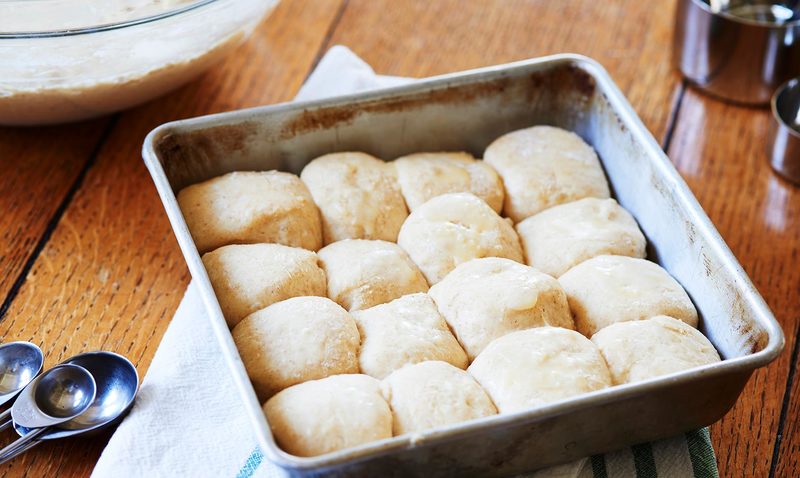Overnight Refrigerator Rolls
As much as I love crusty bread baked in a wood-fired oven, one of my favorite breads insn’t crusty at all. It’s those soft and Southern yeast rolls, which are as much a part of my food story as cornbread or biscuits.
My mother made yeast rolls each and every time company came to visit. And when she was in a hurry, she made overnight rolls.
Overnight rolls, refrigerator rolls, icebox rolls, sometimes called “Frigidaire” rolls, this do-ahead bread dough goes by myriad names. It’s an age-old concept, perfected in the 1930s when women were busy in the workforce, so meals were planned ahead. And with a little forethought, and a refrigrator, bread was freshly baked and served warm at each meal.
The concept of setting dough aside for a longer, slower rise has been around for generations, or at least, until refrigeration came on the scene. You see, cooler temps slow down the growth of yeast, which means the rising dough stands still in the fridge until pulled out and placed in a warm spot to begin rising again.
And the added bonus is that while the dough seems slow to rise, it is developing flavor and its texture is improving. Dough left to rest in cold temperatures overnight will be easier to work with the next day. It will be less sticky and require less flour for rolling out, and thus, the bread doesn’t dry out from too much flour.
Overnight rolls just taste better, too. And whatever you like to call them, these rolls are a nice addition to your baking repertoire. They freeze well, too, if there are any left!
OVERNIGHT REFRIGERATOR ROLLS RECIPE:
Makes about 4 dozen | Prep: 20 minutes | Rise: 1 hour, plus 30 minutes at room temperature, plus overnight in refrigerator | Bake: 15 to 18 minutes
1 1/2 cups cubed, peeled potatoes (from 1 medium russet potato)
1/2 cup (1 stick) unsalted butter, plus more, melted for brushing and greasing
1 package (2 1/4 teaspoons) active dry yeast
1/2 cup sugar
2 large eggs
1 1/2 teaspoons salt
4 cups all-purpose flour, plus more for rolling
1 cup whole-wheat flour
In a small saucepan, cover the potatoes with water. Bring to a boil over medium-high heat, then reduce the heat to low, cover, and simmer until the potatoes are tender, about 15 minutes. Drain, reserving 3/4 cup of the cooking water.
Place the reserved cooking water and the butter back into the small saucepan and heat to 110 degrees over low heat. Remove from the heat and stir in the yeast to dissolve.
Transfer the cooked potatoes to a large bowl and mash. Stir in the sugar, eggs and salt. Stir in the yeast mixture, followed by the flours. Continue to mix with a wooden spoon or electric mixer until smooth. Cover the bowl with a kitchen towel, and let it rise in a warm place until doubled in size, about 1 hour. Punch down the dough, cover the bowl with plastic wrap, place in the fridge at least overnight, and for up to three days.
When ready to bake, heat the oven to 375 degrees F. Butter a shallow baking pan or two, depending on the number of rolls you are baking.
Remove as much dough as you like from the bowl, and, on a lightly-floured surface, press into a round about 1/2 inch thick. Using a 2-inch biscuit cutter, cut into rounds.
For round rolls, place the cut rounds side-by-side in the prepared pan and brush the tops with melted butter. For Parker House rolls, dip the rounds in melted butter and fold the dough over as if you are closing a book. Place side-by-side in the pan, and brush the tops with additional butter. Either way, place in a warm place in the kitchen to rise for about 30 minutes.
Bake until the rolls are golden brown, 15 to 18 minutes. Serve warm.


